This article was co-authored by Lydia Shedlofsky, DO and by wikiHow staff writer, Amber Crain. Dr. Lydia Shedlofsky is a Resident Dermatologist who joined Affiliated Dermatology in July of 2019 after completing a traditional rotating internship at Larkin Community Hospital in Miami, Florida. She earned a Bachelor of Science in Biology at Guilford College in Greensboro, North Carolina. After graduation, she moved to Beira, Mozambique, and worked as a research assistant and intern at a free clinic. She completed a Post-Baccalaureate program and subsequently earned a Master's Degree in Medical Education and a Doctorate of Osteopathic Medicine (DO) from the Lake Erie College of Osteopathic Medicine.
There are 19 references cited in this article, which can be found at the bottom of the page.
This article has been viewed 24,222 times.
If you can’t stop scratching your head because your scalp itches, the best thing to do is treat the cause of the itching! Dandruff and allergic reactions to hair products are the most common culprits. Luckily, you can treat these issues at home with over-the-counter products. If your scratching is more of a compulsive thing and it isn’t triggered by an itch, you may be suffering from a disorder called dermatillomania. Start by visiting a doctor to get a treatment plan that’s right for you. Support groups and online resources are also wonderful and effective tools to help you on your journey to recovery.
Steps
Soothing an Itchy Scalp
-
1Wash your hair with dandruff shampoo if you see white flakes. If your scalp is itchy and you see white flakes in your hair, the culprit is probably dandruff. Dandruff is very common so don't be embarrassed! To treat dandruff, start by using an over-the-counter shampoo that contains the ingredients selenium or zinc pyrithione to keep flakes and itchiness at bay.[1]
- Most over-the-counter shampoos can be used every time you wash your hair to treat and prevent dandruff.
- If an over-the-counter shampoo doesn’t work, see a doctor for a prescription-strength antifungal shampoo. Topical cortisone may also be recommended.
- Dandruff flakes are usually white or yellow. They're caused by seborrheic dermatitis, which is a fairly common skin condition.[2]
-
2Stop using new hair products if your scalp is suddenly red and irritated. Some hair products can irritate your scalp and cause an allergic reaction called contact dermatitis. If you recently dyed your hair or used a new product and shortly after experienced a red, itchy rash, contact dermatitis is likely the cause. Stop using the product immediately to see if the irritation and itchiness subside.[3]
- Hair bleaches, dyes, shampoos, conditioners, and chemicals used for perms and straighteners are the most common triggers for contact dermatitis.
- If rash doesn’t go away after a few days, see a doctor or dermatologist. They usually prescribe topical steroids or oral antihistamines as treatment.[4]
- If you aren’t sure what chemical you’re having a reaction to, ask your dermatologist about specialized tests that can identify it. That way, you can avoid that chemical in the future![5]
Advertisement -
3Use an over-the-counter medicated shampoo if you suspect head lice. Ask someone to examine your scalp and hair closely for nits, which are unhatched lice eggs. Using a magnifying glass can help! You can get rid of nits and lice by applying an over-the-counter medicated shampoo containing the ingredients pyrethrin or permethrin. Each product is different, so follow the included directions exactly. Typically, you apply the product, wait a specified amount of time, and rinse it out.[6]
- Nits attach to individual hair strands close to the scalp and may look like stubborn dandruff at first glance. Adult lice are about the size of a sesame seed and may be seen on the scalp.[7]
- The medication should kill on contact. After rinsing it out, use a fine-toothed comb or special "nit comb" to remove the dead lice and nits.[8]
- Repeat this process every 2-3 days for at least 2 weeks to make sure you get rid of the lice.
-
4See a doctor if you have bald patches that are itchy and red. If you have red patches of extremely itchy skin combined with hair loss, you probably have a fungal infection called tinea capitis, also known as scalp ringworm. Over-the-counter medications won’t cut it—to get relief, a doctor or dermatologist needs to diagnose and treat you with oral anti-fungal medication.[9]
- Sometimes scalp rashes are raised and have black dots or a stubbly appearance.[10]
-
5Visit a doctor if you see itchy patches of thick, red skin with silvery scales. This condition is called psoriasis and it often affects the scalp at the nape or hair line. It’s important to see a dermatologist if you’ve never experienced these patches, called scales, to get a diagnosis and effective treatment. Doctors typically prescribe special creams, oral medications, and light therapy to combat a psoriasis flare-up.[11]
- Psoriasis can be a little scary if this is your first time experiencing it! The treatments are usually quite effective, but you may also need to make lifestyle adjustments, like changing your diet or reducing stress, to fully get rid of it. Your doctor will explain everything.[12]
- If you’ve had a flare-up before and know what you’re dealing with, you can try over-the-counter medicated shampoos and scale treatments to get relief. If those don’t work, make an appointment with your dermatologist.[13]
Dealing with a Compulsive Habit
-
1Ask yourself if your scalp itches or if you're scratching compulsively. If you often find yourself scratching and picking at your scalp without something—like an itch—triggering it, you may have a disorder called dermatillomania. People with dermatillomania usually scratch or pick the most when they’re feeling stressed or anxious about something. Often, you may not even realize you’re doing it until you draw blood or create painful sores on your scalp.[14]
-
2See a doctor for a diagnosis and treatment plan. Dermatillomania can be an unsettling thing to experience. Just know that you aren’t alone and others also suffer from this issue. While there are things you can do on your own to control the behavior, start by seeing a psychiatrist or therapist that specializes in Body-Focused Repetitive Behavior (BFRB). That way, you can develop a strong treatment plan and better understand your condition.[17]
- Cognitive behavior therapy (CBT) and habit reversal training have proven to be very effective treatments.
- Underlying conditions like depression and obsessive-compulsive disorder can be—and often are—associated with dermatillomania. Your doctor may recommend oral medications like fluoxetine, fluvoxamine, and escitalopram to treat those underlying conditions.[18]
- Skin-picking can be a symptom of a dermatological, autoimmune, or substance abuse disorder, so it’s important to see a doctor for an accurate diagnosis.[19]
- If you need help finding a therapist, visit https://www.bfrb.org/find-help-support.
-
3Keep your hands busy by squeezing a stress ball to resist the urge. Anxiety often causes absent-minded fidgeting that triggers a scratching or skin-picking episode. One of the easiest ways to prevent this is by keeping your hands busy doing other things! Keep a stress ball nearby and squeeze it whenever your hands aren’t occupied.[20]
- The stress ball allows you to "fidget” without hurting yourself and squeezing it may even help reduce your stress.
- If you can’t use a stress ball, wearing gloves may also help.
-
4Figure out your triggers and avoid or address them, if possible. Pay attention to when and where you tend to do the most scratching and try your best to avoid these triggers altogether.[21] Since avoiding triggers isn’t always an option, you can at least prepare by bringing along a stress ball or wearing gloves. If your trigger is something you can change, try addressing it head-on rather than ignoring or avoiding it.[22]
- For example, if you're triggered by busy highway traffic on your daily commute, find an alternate route that's more comfortable for you.
- Mirrors are common triggers. If they trigger you, removing the mirrors in your bedroom and installing softer lighting in the bathroom can help.
- Remember that triggers aren’t always stressors. Scratching can happen during calm moments when you drop your guard or get distracted.[23]
-
5Keep your nails trimmed short so scratching is less satisfying. Long fingernails can quickly exacerbate a skin-picking disorder because the nails makes scratching easier and more satisfying. Before you know it, your scalp is bleeding or you have painful, infected sores that you can’t get rid of. Long nails can also cause more damage and permanent scarring.[24]
- Keeping your nails short won’t fully control your urges, but it can lessen the damage and hopefully make the behavior a little less appealing.
-
6Explore support groups and online resources for additional help. Talking to other people who understand what you’re going through is an important part of BFRB recovery. You can find crucial allies like this at local support groups and online support groups. There's also a wealth of free online resources that can help you on your recovery journey. You’re not alone![25]
- For information on support groups and other BFRB resources, visit https://www.bfrb.org/find-help-support
Warnings
- If you can’t get rid of your itchy scalp with over-the-counter products, be sure to see a doctor as soon as possible. [26]⧼thumbs_response⧽
- If you have swollen or inflamed scratches, lesions, or other open wounds on your scalp, it’s important to see a medical doctor quickly so they can help you get rid of the infection.[27]⧼thumbs_response⧽
References
- ↑ https://health.clevelandclinic.org/itchy-scalp-5-common-problems-and-fixes/
- ↑ https://medlineplus.gov/dandruffcradlecapandotherscalpconditions.html
- ↑ https://www.aad.org/public/everyday-care/itchy-skin/itch-relief/relieve-scalp-itch
- ↑ https://pubmed.ncbi.nlm.nih.gov/28396898/
- ↑ https://health.clevelandclinic.org/itchy-scalp-5-common-problems-and-fixes/
- ↑ https://health.clevelandclinic.org/itchy-scalp-5-common-problems-and-fixes/
- ↑ https://www.cdc.gov/parasites/lice/head/gen_info/faqs.html
- ↑ https://medlineplus.gov/headlice.html
- ↑ https://www.aad.org/public/everyday-care/itchy-skin/itch-relief/relieve-scalp-itch
- ↑ https://health.clevelandclinic.org/itchy-scalp-5-common-problems-and-fixes/
- ↑ https://medlineplus.gov/psoriasis.html
- ↑ https://www.cdc.gov/psoriasis/index.htm
- ↑ https://www.aad.org/public/everyday-care/itchy-skin/itch-relief/relieve-scalp-itch
- ↑ https://www.mhanational.org/conditions/excoriation-disorder-skin-picking-or-dermatillomania
- ↑ https://my.clevelandclinic.org/health/diseases/22706-dermatillomania-skin-picking
- ↑ https://my.clevelandclinic.org/health/diseases/22706-dermatillomania-skin-picking
- ↑ https://www.psychologytoday.com/us/conditions/dermatillomania-skin-picking
- ↑ https://iocdf.org/wp-content/uploads/2014/10/Skin-Picking-Disorder-Fact-Sheet.pdf
- ↑ https://www.bfrb.org/learn-about-bfrbs/skin-picking-disorder
- ↑ https://www.nhs.uk/conditions/skin-picking-disorder/
- ↑ Lydia Shedlofsky, DO. Dermatologist. Expert Interview. 30 September 2020.
- ↑ https://www.bfrb.org/learn-about-bfrbs/treatment/self-help/127-rs-list-of-strategies-for-skin-picking-49-im-using-42-i-could-try
- ↑ https://pickingme.org/blog/blog.html/article/2018/07/03/5-misconceptions-around-dermatillomania
- ↑ https://www.nhs.uk/conditions/skin-picking-disorder/
- ↑ https://www.bfrb.org/find-help-support
- ↑ https://health.clevelandclinic.org/itchy-scalp-5-common-problems-and-fixes/
- ↑ https://www.bfrb.org/learn-about-bfrbs/skin-picking-disorder
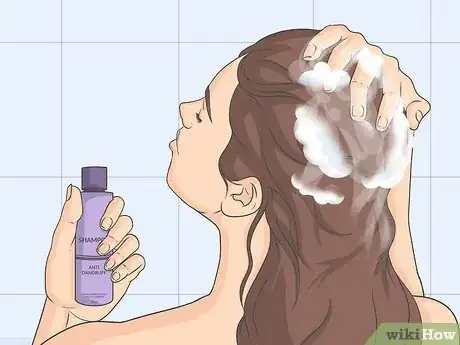






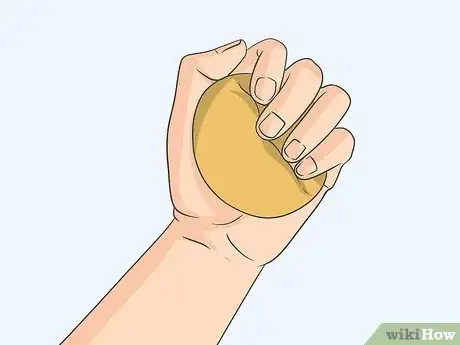



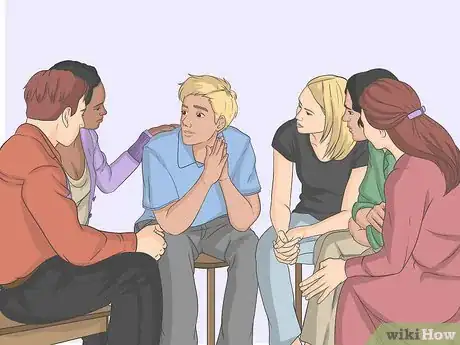



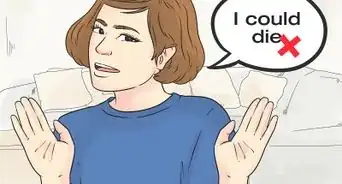




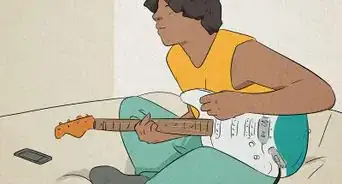
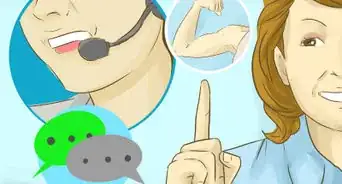
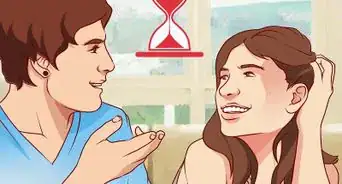

















































Medical Disclaimer
The content of this article is not intended to be a substitute for professional medical advice, examination, diagnosis, or treatment. You should always contact your doctor or other qualified healthcare professional before starting, changing, or stopping any kind of health treatment.
Read More...